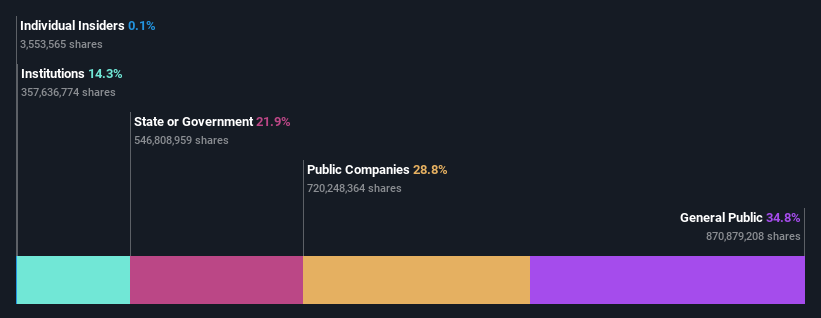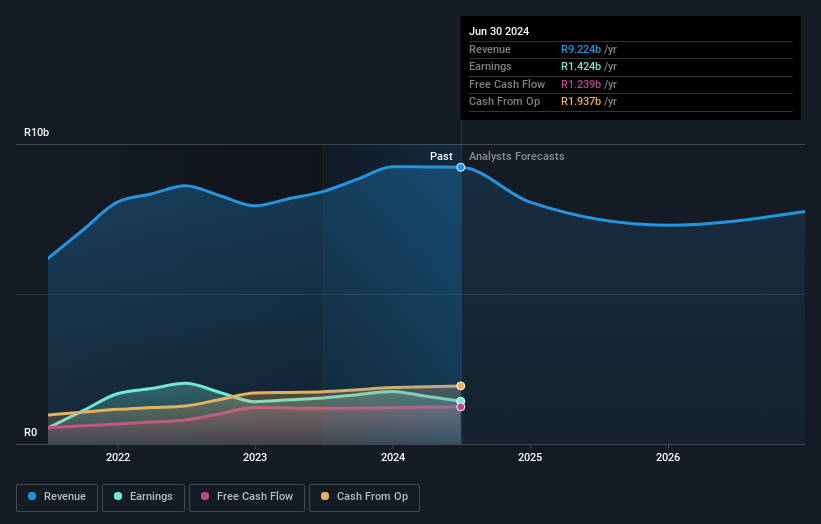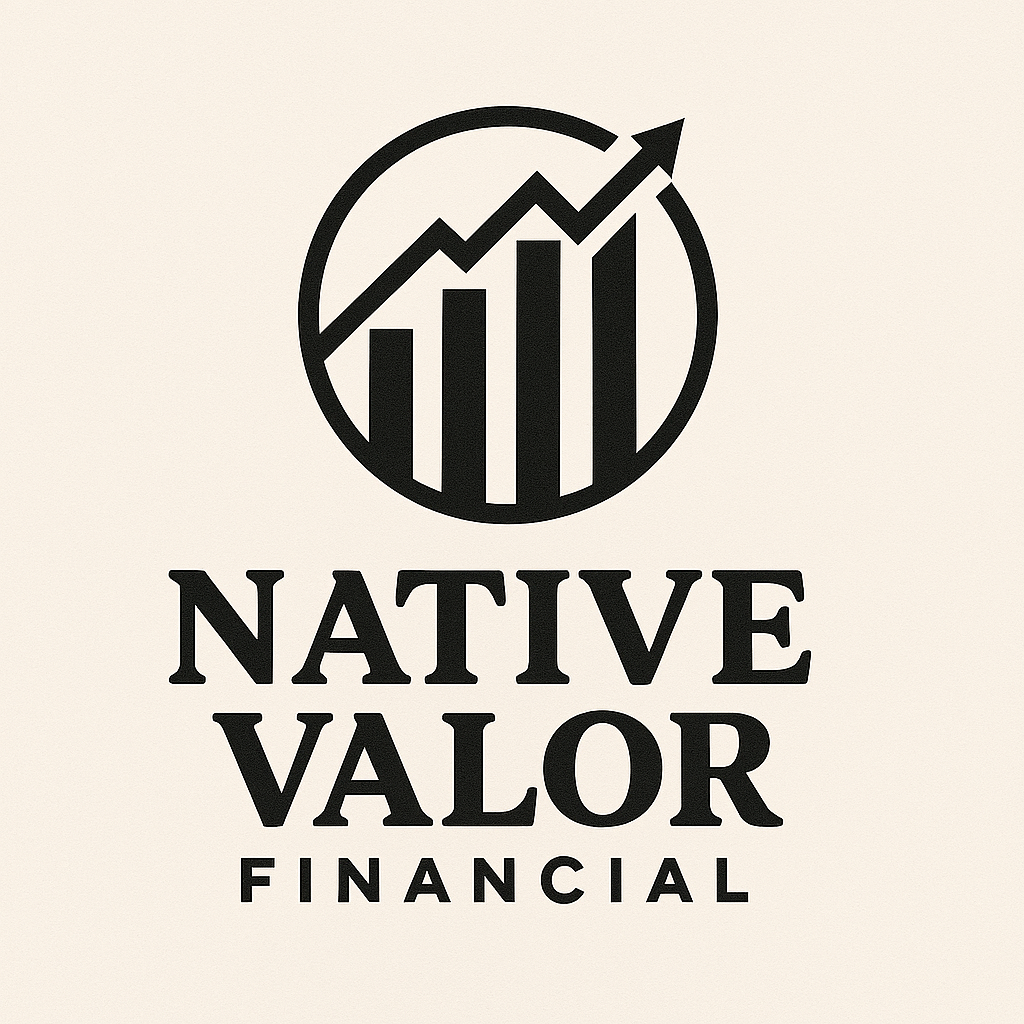- South Africa
- /
- Metals and Mining
- /
- JSE:MRF
Individual investors among Merafe Resources Limited's (JSE:MRF) largest stockholders and were hit after last week's 21% price drop
Key Insights
- Significant control over Merafe Resources by individual investors implies that the general public has more power to influence management and governance-related decisions
- The top 2 shareholders own 51% of the company
- Institutional ownership in Merafe Resources is 14%
If you want to know who really controls Merafe Resources Limited (JSE:MRF), then you'll have to look at the makeup of its share registry. We can see that individual investors own the lion's share in the company with 35% ownership. Put another way, the group faces the maximum upside potential (or downside risk).
And following last week's 21% decline in share price, individual investors suffered the most losses.
In the chart below, we zoom in on the different ownership groups of Merafe Resources.
See our latest analysis for Merafe Resources

What Does The Institutional Ownership Tell Us About Merafe Resources?
Institutional investors commonly compare their own returns to the returns of a commonly followed index. So they generally do consider buying larger companies that are included in the relevant benchmark index.
Merafe Resources already has institutions on the share registry. Indeed, they own a respectable stake in the company. This implies the analysts working for those institutions have looked at the stock and they like it. But just like anyone else, they could be wrong. It is not uncommon to see a big share price drop if two large institutional investors try to sell out of a stock at the same time. So it is worth checking the past earnings trajectory of Merafe Resources, (below). Of course, keep in mind that there are other factors to consider, too.

We note that hedge funds don't have a meaningful investment in Merafe Resources. The company's largest shareholder is Glencore plc, with ownership of 29%. Meanwhile, the second and third largest shareholders, hold 22% and 6.2%, of the shares outstanding, respectively.
To make our study more interesting, we found that the top 2 shareholders have a majority ownership in the company, meaning that they are powerful enough to influence the decisions of the company.
While it makes sense to study institutional ownership data for a company, it also makes sense to study analyst sentiments to know which way the wind is blowing. There is some analyst coverage of the stock, but it could still become more well known, with time.
Insider Ownership Of Merafe Resources
The definition of company insiders can be subjective and does vary between jurisdictions. Our data reflects individual insiders, capturing board members at the very least. Company management run the business, but the CEO will answer to the board, even if he or she is a member of it.
Insider ownership is positive when it signals leadership are thinking like the true owners of the company. However, high insider ownership can also give immense power to a small group within the company. This can be negative in some circumstances.
Our most recent data indicates that insiders own less than 1% of Merafe Resources Limited. It seems the board members have no more than R5.3m worth of shares in the R3.7b company. Many investors in smaller companies prefer to see the board more heavily invested. You can click here to see if those insiders have been buying or selling.
General Public Ownership
The general public, who are usually individual investors, hold a 35% stake in Merafe Resources. While this size of ownership may not be enough to sway a policy decision in their favour, they can still make a collective impact on company policies.
Public Company Ownership
We can see that public companies hold 29% of the Merafe Resources shares on issue. We can't be certain but it is quite possible this is a strategic stake. The businesses may be similar, or work together.
Next Steps:
I find it very interesting to look at who exactly owns a company. But to truly gain insight, we need to consider other information, too. Take risks for example - Merafe Resources has 2 warning signs we think you should be aware of.
If you are like me, you may want to think about whether this company will grow or shrink. Luckily, you can check this free report showing analyst forecasts for its future.
NB: Figures in this article are calculated using data from the last twelve months, which refer to the 12-month period ending on the last date of the month the financial statement is dated. This may not be consistent with full year annual report figures.
New: Manage All Your Stock Portfolios in One Place
We've created the ultimate portfolio companion for stock investors, and it's free.
• Connect an unlimited number of Portfolios and see your total in one currency
• Be alerted to new Warning Signs or Risks via email or mobile
• Track the Fair Value of your stocks
Have feedback on this article? Concerned about the content? Get in touch with us directly. Alternatively, email editorial-team (at) simplywallst.com.
This article by Simply Wall St is general in nature. We provide commentary based on historical data and analyst forecasts only using an unbiased methodology and our articles are not intended to be financial advice. It does not constitute a recommendation to buy or sell any stock, and does not take account of your objectives, or your financial situation. We aim to bring you long-term focused analysis driven by fundamental data. Note that our analysis may not factor in the latest price-sensitive company announcements or qualitative material. Simply Wall St has no position in any stocks mentioned.
About JSE:MRF
Merafe Resources
Engages in the mining and beneficiation of chrome ore into ferrochrome and associated minerals.
Flawless balance sheet with low risk.
Similar Companies
Market Insights
Community Narratives



